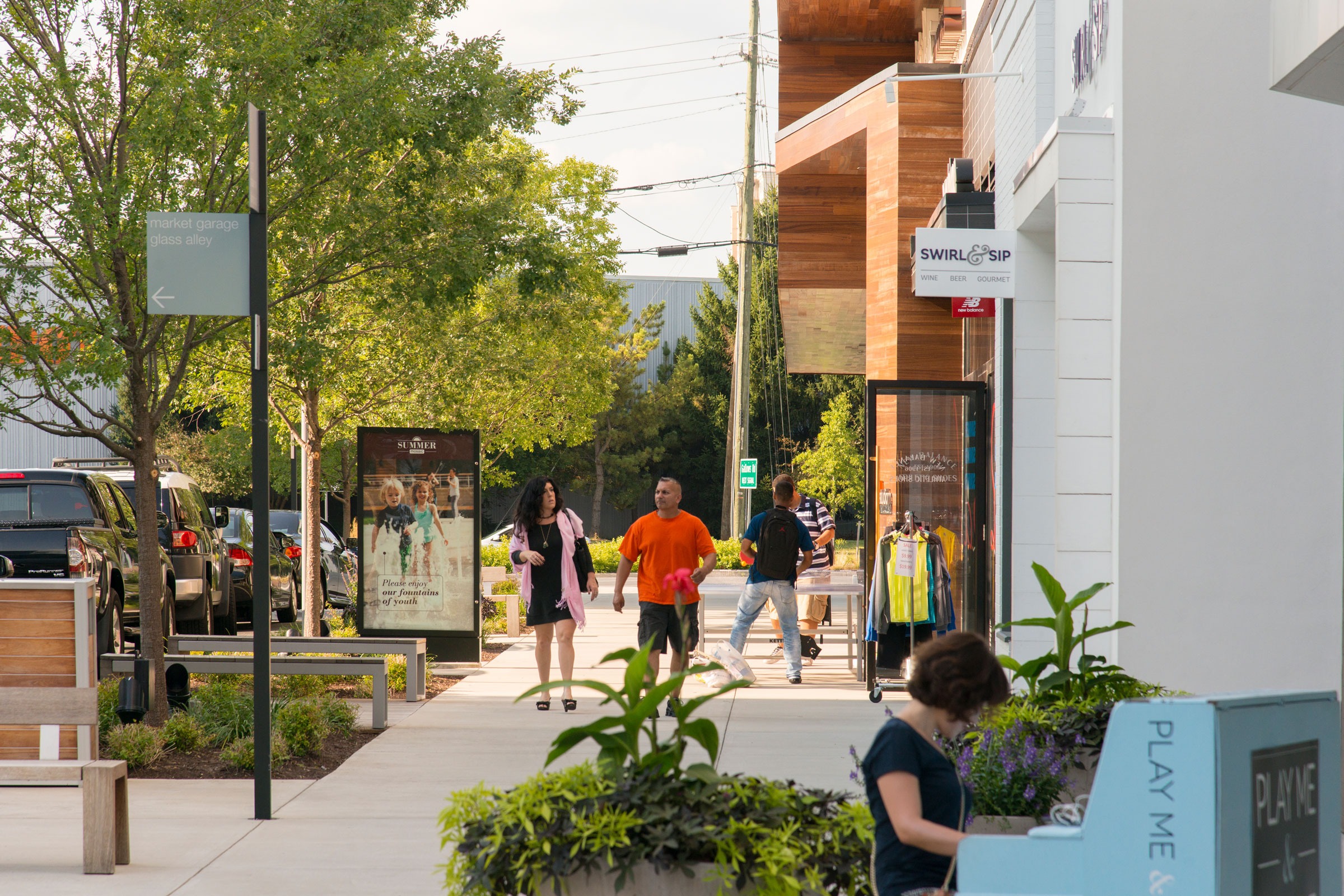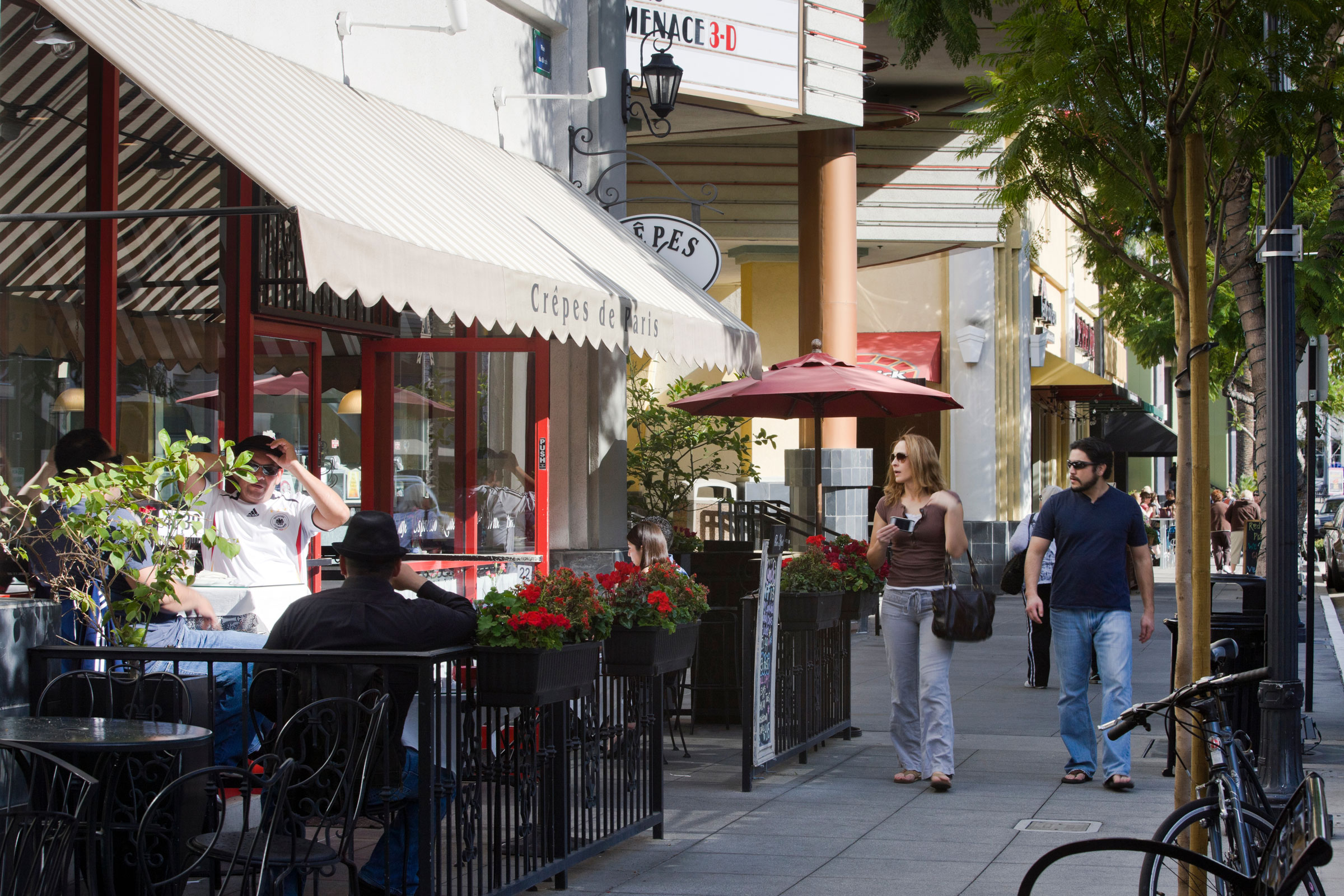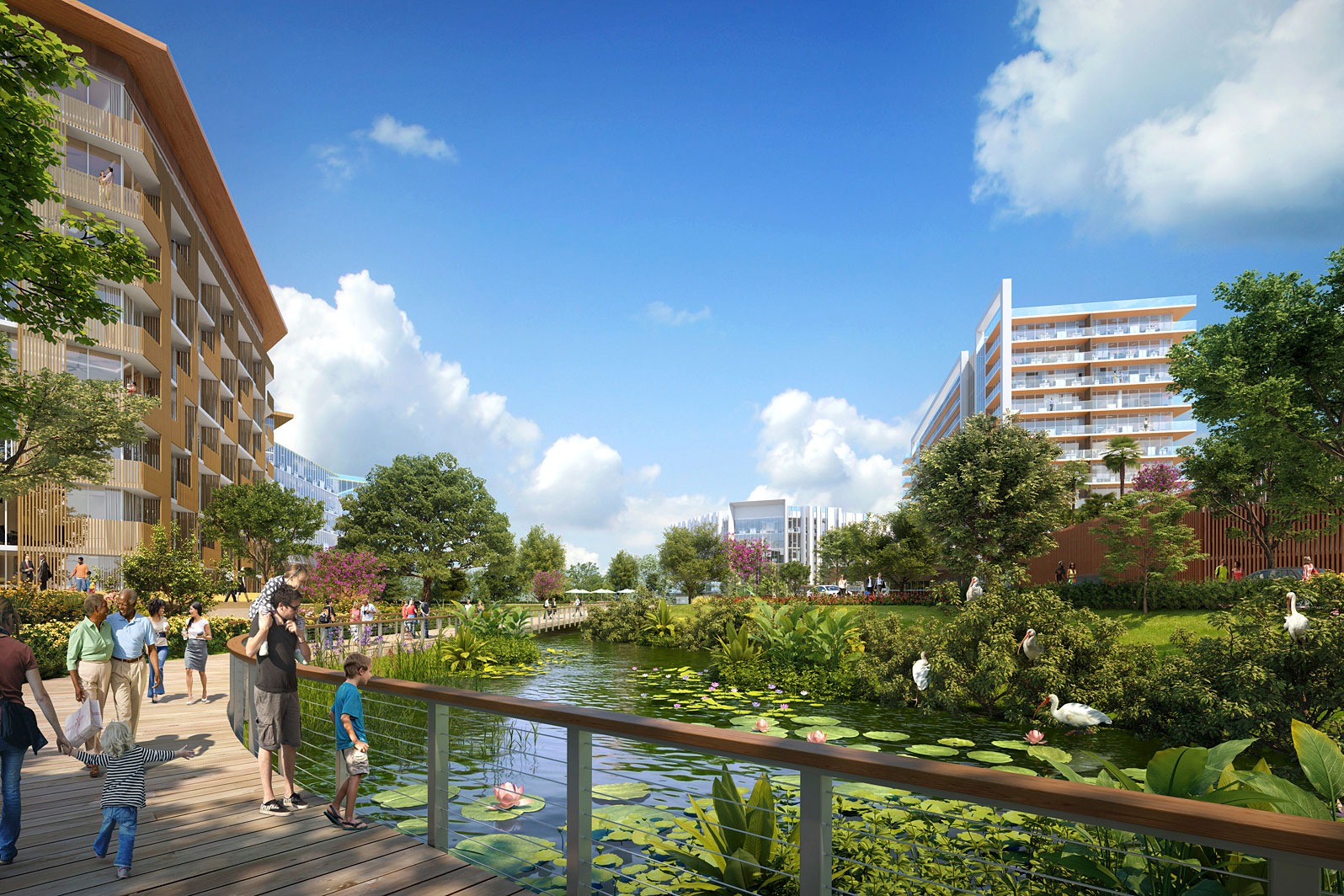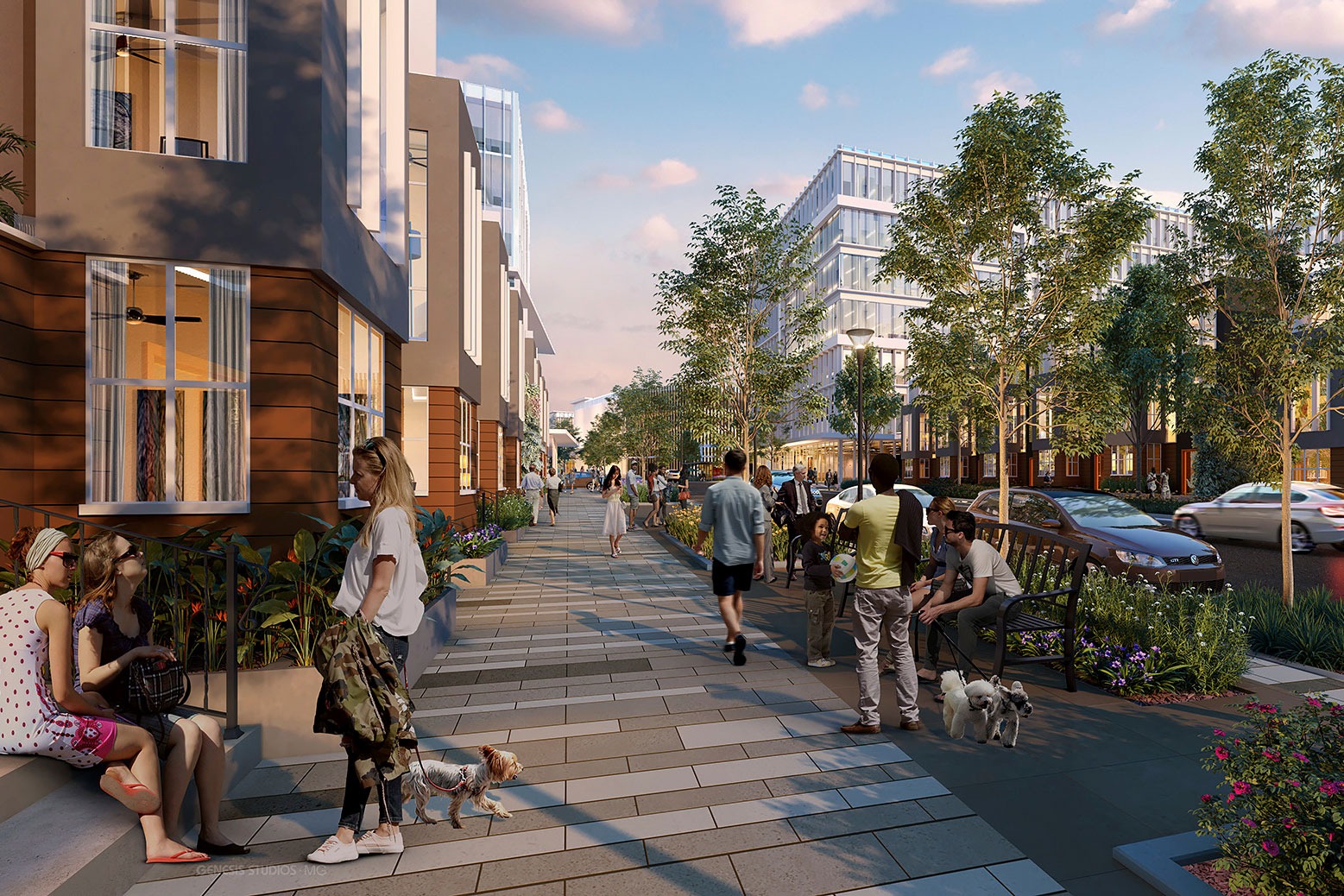Story at a glance:
- Designing for walkability is designing for humans and the environment, as it minimizes emissions from cars, creates stronger community ties, and stimulates local economies.
- The COVID-19 pandemic amplifies the desire for walkability in cities as people working from home seek ways to stay active and engage in local communities without compromising health and safety.
- CallisonRTKL’s urban planning experts are finding innovative and exciting ways to design for walkability and foster community.
The months-long coronavirus pandemic has shown us that during times of crisis, the systems of transport we rely on—from buses and subways to rideshares—are not always good for our health. The most sustainable cities are truly resilient and include design for walkability, allowing people to get around on two feet with easy access to key business and cultural hubs without putting their health at risk.
The trend toward walkable communities continues to increase in popularity, with walkable neighborhoods growing more than twice as fast as the overall market, according to an article from the National Association of Realtors. Urban design experts worldwide are weighing in on the importance of an urban planning approach that is focused around walkable districts—a system that not only prioritizes people and safety in times of crisis but also puts the environment first.
In the US, New York City, Washington DC, Boston, Chicago, San Francisco, and Seattle are the most walkable urban spaces. However, according to the Urban Sustainability Directors Network (USDN), walkable communities are starting to crop up outside of densely populated cities, too.
“Walkable mixed-use neighborhoods give residents the opportunity to live, work, shop, and dine in a walkable area—one that finds a balance between pedestrians, bicyclists, transit, and other motorized vehicles used for business or pleasure,” according to the USDN.

CallisonRTKL laid the groundwork for a successful mixed-use and walkable development with a one-acre park for community engagement, including yoga and stroller strides. Courtesy of CallisonRTKL
A Sustainable Environment
It is well known that burning fossil fuels releases harmful greenhouse gases (GHGs) into the atmosphere, resulting in detrimental consequences that will be fatal to many of our natural resources. According to the EPA, transportation accounts for about 28% of total US greenhouse gas emissions, making it the largest contributor of US GHG emissions.
Between 1990 and 2018 GHG emissions in the transportation sector increased more in absolute terms than any other sector. Cars and trucks in suburban or commuter cities regularly sit in gridlocked traffic, exacerbating the pollution caused by vehicles.
On the other hand, walkable communities encourage fewer car trips, which minimizes air and noise pollution since residents can feasibly walk to everything they need on a day-to-day basis. This increase in walkability suggests a human-centric environment that is also favorable to sustainable practices.
Health and Wellness
As a result of the COVID-19 pandemic, a large population of the workforce has stepped away from the physical office and moved indoors for remote working. Unfortunately, long working hours cause people to sit in one spot just like they would have any typical office workday. Without a clue as to when the return to the office will be, people living in suburban areas might not be able to increase their mobility as much as someone who lives in a walkable city.
Urban designers can help redesign these neighborhoods to provide an accessible, active lifestyle. In these walkable communities, people can walk to and from work, visit a local restaurant, or run errands by foot and shop in the community. With obesity rates on the rise nationwide, the act of walking is one of the easiest ways for people to increase their daily physical activity and can become one of the most accessible as well.

Birch Street Promenade at the Brea Redevelopment Master Plan is geared toward pedestrians, reconnecting residents with visitors to enjoy Brea’s unique atmosphere. Courtesy of CallisonRTKL
Stimulating the Local Economy
According to a report by StrongTowns.org, businesses typically thrive on streets where walking is safe and easy. Streetscape enhancements add value to an area and are associated with higher rents and the attraction of new businesses. Plus, walkable communities support the local business environment and increase its appeal to visitors and residents alike, as people are more likely to shop in areas where stores are clustered together and where foot traffic is high.
A walkable street ensures people can safely zigzag to visit multiple shops and see more local businesses that might otherwise be missed if riding in a fast vehicle. Simultaneously, these walkable communities foster a stronger urban fabric and sense of community as one’s neighbors, nearby relatives, and friends are likely to be there as well.
The Future of Walkable Cities

The street framework of Broward County Arena Concept Master Plan has been organized to balance pedestrian, bicycle, and automobile traffic. All streets have been designed to accommodate wide sidewalks buffered from automobiles with street trees and planting areas and include a range of shading devices such as arcades, awnings, and overhangs to enhance pedestrian comfort. Courtesy of CallisonRTKL
In the last decade global architecture and design firm CallisonRTKL (CRTKL) has designed multiple town centers and walkable districts that have proven successful in the promotion of sustainability, health and wellness, and economic prosperity.
In Fairfax County, Virginia, CRTKL laid the groundwork for Mosaic, previously known as the Merrifield Town Center, a carefully curated shopping center. Ultimately Mosaic has been highly successful in illustrating the live/work/play aspect that is present in the concept of walkability. What started off as a shopping center has evolved into a community staple.
Similarly, the Broward County Arena Concept Master Plan in the greater Fort Lauderdale area will provide office, residential, hospitality, entertainment, and retail venues surrounding the BB&T Center Arena and expects to become an anchor community for western Broward County.
As the demand for walkable cities continues to increase, urban planning experts at CRTKL are prepared to equip suburban and urban areas with the tools needed to foster this type of community. In rapid response to the COVID-19 pandemic, the firm looked at the efforts of more than 50 cities nationwide, as there are a groundswell of community-based initiatives to open up streets to pedestrians and close them down to motor vehicles—a testament to the vitality of the walkability strategy.
What communities are seeing now is the desire to claim the streets as part of the public realm, as people long to find solace in outdoor spaces where they can safely socialize and support local businesses. With so many benefits to reap, walkable districts are pushing cities forward and amplifying their ability to become more resilient, safer, and healthier places.


